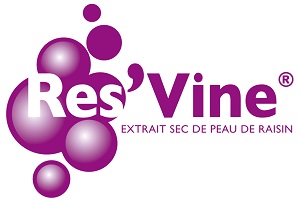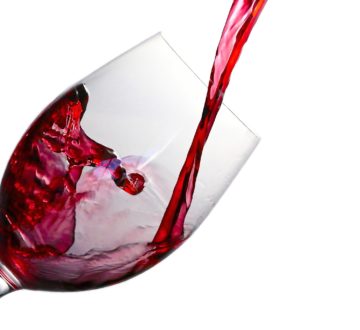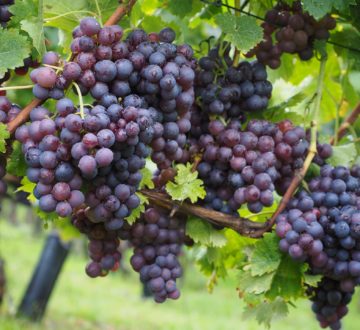Res’vine® is a dry extract from the skin of grapes derived from Vitis vinifera L., containing over 5% trans-resveratrol, making it one of our premium ingredients. Resveratrol is a stilbene, a non-flavonoid polyphenolic compound, widely studied for its numerous health benefits.
Research into resveratrol dates back to the 1990s, following the revelation of the “French Paradox”. Indeed, in spite of consuming high levels of animal and saturated fats, the French population enjoys a lower risk of cardiovascular disease owing to their daily consumption of resveratrol-rich red wine.13
Numerous scientific studies have since confirmed the beneficial effects of resveratrol with regard to cardiovascular health1, the health of the skin2, its antioxidant properties3, and its role in cognitive performance4
Res’Vine® promotes Cardiovascular Health
Resveratrol, a valuable polyphenol found in grapes and wine, has been extensively studied for its beneficial effects on the cardiovascular system. 5
In a triple-blind, placebo-controlled study, 75 participants were randomly assigned during six months (6) to take either:
- A placebo (maltodextrin)
- A grape extract containing no resveratrol
- One 350 mg capsule per day enriched with resveratrol at 8 mg per capsule.
At the end of 6 months, no change was noted in the placebo group. Only LDL cholesterol (LDLc) was reduced by 2.9% (p = 0.013) in the group taking grape extract alone. However, the levels of bad cholesterol – LDLc, Apolipoprotein B (ApoB)*, oxidised LDLc**, along with the LDLox/ApoB ratio – were all significantly reduced in the group receiving supplements of grape extract and resveratrol.
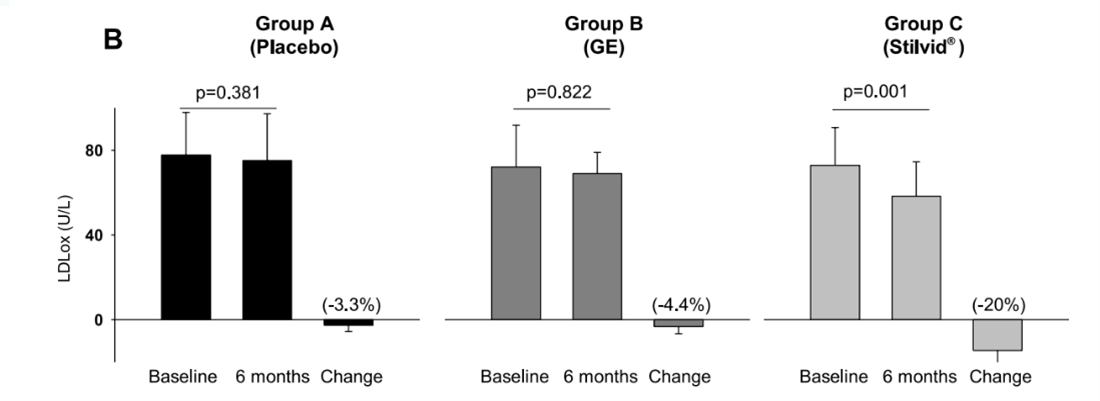
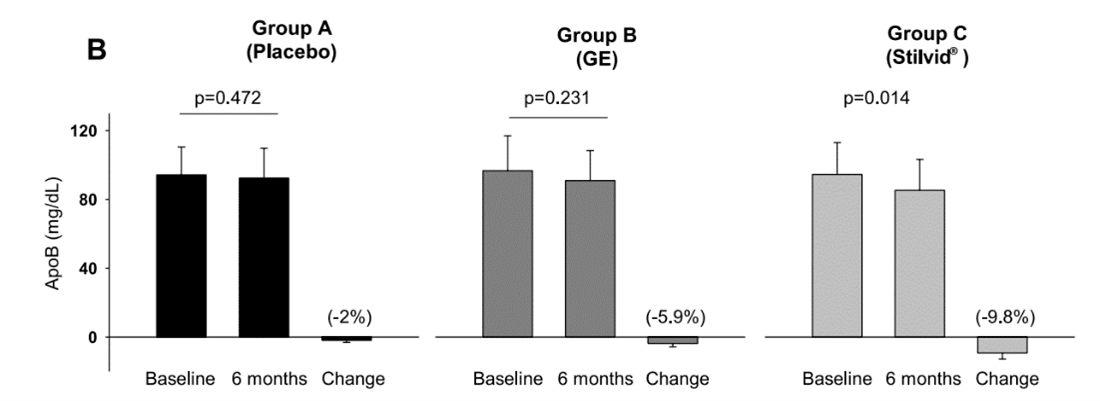
In another in vitro study, resveratrol was shown to increase the production of sirtuin1. Known as the “longevity protein”, this substance exerts a vasodilatory effect within the endothelial system. The protein stimulates the production of nitric oxide, which is involved in reducing platelet aggregation, and encourages the recruitment of leukocytes, a factor in cardiovascular risk.7
*Oxidised LDLc, also known as oxidised cholesterol, involves the oxidation of LDL molecules occurring within the blood, thereby reducing their affinity for hepatic receptors and thus resulting in less efficient purification of the bloodstream.
** Apolipoproteins B: Apolipoproteins (or apoproteins) are those produced by the liver that are involved in transporting the LDLc.
The “For cardiovascular health” claim is currently pending a decision by the European Commission.
Res’Vine® healthy skin: addressing the signs of ageing
Resveratrol also offers a number of beneficial effects for skin tissue and its general appearance. It is involved in the differentiation of keratinocytes by stimulating the activity of certain enzymes. In particular, it stimulates transglutaminase, responsible for the synthesis of skin and hair cells, acting to inhibit melanogenesis*, a process responsible for the appearance of ageing skin.8
An in vitro study carried out on keratinocyte cell lines revealed that resveratrol protects keratinocytes from free radicals, especially those triggered by exposure to UV rays and other pollutants.9
In a separate study, 50 participants aged between 35 and 65 were randomised over a period of 60 days to assess the effect of grape extract supplementation on hydration, the depth of wrinkles, skin elasticity, coarseness, and the presence of liver spots. The subjects selected were already showing signs of ageing. Participants in the intervention group were randomised to receive one capsule of V.vinifera extract containing 8 mg of resveratrol, i.e. 3% of the capsule content. This extract was combined with other polyphenols.12
At the end of 60 days of treatment, the results revealed a significant increase in hydration and elasticity, as well as a marked reduction in both roughness and depth in the individuals taking the grape extract.
*Melanogenesis involves a complex process by which pigmentary melanin is produced by melanocytes.
Res’Vine® for Cognitive Function
The natural compounds present in grapes, such as resveratrol, have been identified as having antioxidant properties. Several studies have indicated that grapes or wine may improve mental capacity and performance, as well as other age-related effects.
In a double-blind, placebo-controlled study10, 10 participants aged between 66 and 85 displaying mild cognitive decline were randomised to receive either 72g/day of Vitis vinifera grape powder containing polyphenols (Resveratrol: 0.70 mg/kg) or a placebo for a period of six months. The study concluded that supplementing with grape powder could improve longitudinal changes in the cerebral metabolism. This finding was correlated with improvements in working memory performance and attentiveness.
In another randomised, placebo-controlled study4, 46 individuals aged between 50 and 80 were tested to determine whether a supplement of 200 mg/d of resveratrol over a period of 26 weeks could improve memory performance. Before and after the treatment period, the participants were subjected to memory tasks and neuroimaging tests to assess the volume, microstructure, and functional connectivity of their hippocampus, a key region of the brain involved in memory functions. The researchers reported a significant benefit of resveratrol on word retention over a 30-minute period compared with the placebo group (p = 0.038). Additionally, resveratrol induced significant increases in the functional connectivity of the hippocampus.
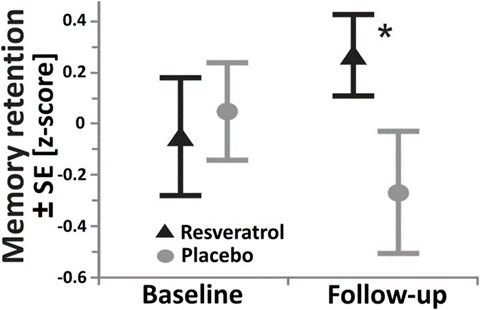
In a further randomised, placebo-controlled crossover trial11 over a period of 24 months, 125 postmenopausal women aged between 45 and 85 were started on 75 mg of trans-resveratrol or a placebo twice daily for 12 months, before being switched over to the other treatment for a further 12 months. The trial results indicated that resveratrol supplementation could improve both the endothelial function and cerebrovascular and cognitive functions. In addition, compared with the placebo, the supplement led to significantly improved overall cognitive performance by 33%.
Properties of Res’Vine®
- Over 5% trans-resveratrol – 7 times greater antioxidant action than the cis form
- 100% derived from the skin of grapes – the main source of resveratrol
- Hydro-dispersible
- Outstanding bioavailability
- Benefits for the health of the skin and the cardiovascular and cognitive systems
- Maximum dose: 150mg/day of resveratrol in food supplements intended for use by adults.
References
- Tomé-Carneiro J., Gonzalvez M., Larrosa M., Garcia-Almagro F.J. et al. Mol Nutr Food Res,2012;56:810-821
- Bastianetto S, Dumont Y, Duranton A, Vercauteren F, Breton L, Quirion R, 2010, PLoS ONE 5(9): e12935. doi:10.1371/journal.pone.0012935
- Nakata R, Takahashi S, Inoue H. 2012. Biol. Pharm. Bull. 35: 273-9
- Witte A.V., Kerti L., Margulies D.S., and Flöel A. E, J Neurosci,2014;34(23):7862-7870.
- Vang, O., Ahmad, N., Baile, C. A., Baur, J. A. et al., . PLoS One 2011, 6, e19881.
- Tomé-Carneiro J, Gonzálvez M, Larrosa M, García-Almagro FJ, Avilés-Plaza F, Parra S, Yáñez-Gascón MJ, Ruiz-Ros JA, García-Conesa MT, Tomás-Barberán FA, Espín JC. Mol Nutr Food Res. 2012 May;56(5):810-21.
- Ilwola Mattagajasingh, Cuk-Seong Kim, Asma Naqvi, Tohru Yamamori, Timothy A. Hoffman, Saet-Byel Jung, Jeremy DeRicco, Kenji Kasuno, and Kaikobad Irani, Proceedings of the National Academy of Sciences of the United States of America, Vol. 104, 2007, Pages 14855-14860.
- Ratz-Łyko A, Arct J. J Cosmet Laser Ther. 2019;21(2):84-90.
- Chen ML,Li J,Xiao WR,Sun L,Tang H,Wang L,Wu LY,Chen X,Xie HF, Journal of Central South University, Vol. 31, 2006, Pages 635-639.
- Lee J, Torosyan N, Silverman DH. Exp Gerontol. 2017 Jan;87(Pt A):121-128. doi: 10.1016/j.exger.2016.10.004. Epub 2016 Nov 14. PMID: 27856335.
- Thaung Zaw JJ, Howe PR, Wong RH. Clin Nutr. 2021 Mar;40(3):820-829.
- Buonocore D, Lazzeretti A, Tocabens P, Nobile V, Cestone E, Santin G, Bottone MG, Marzatico F. Clin Cosmet Investig Dermatol. 2012;5:159-65.
- Renaud S., de Lorgeril M. Lancet. 1992;339:1523–1526.
 All of our references
All of our references
To learn more, contact us !

